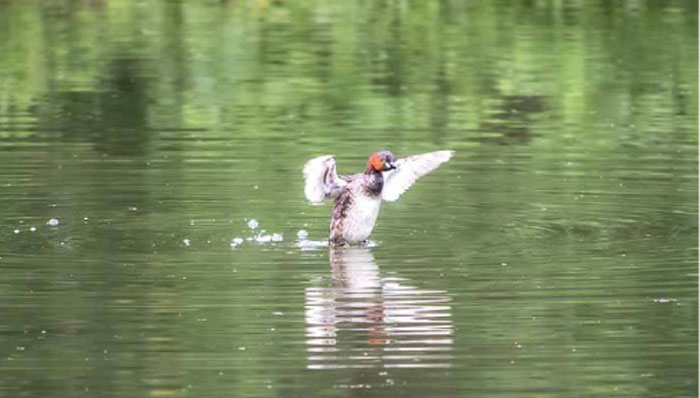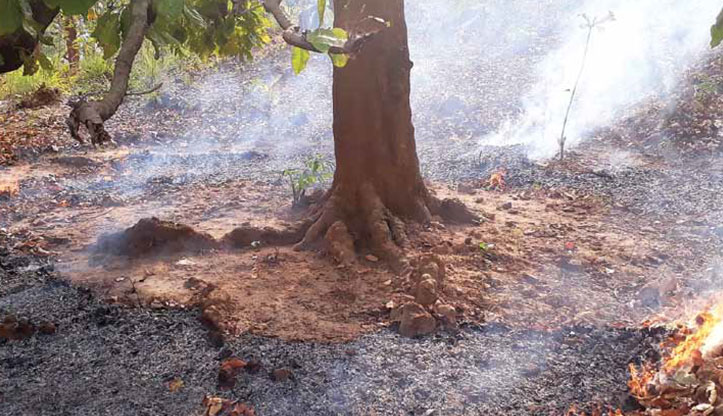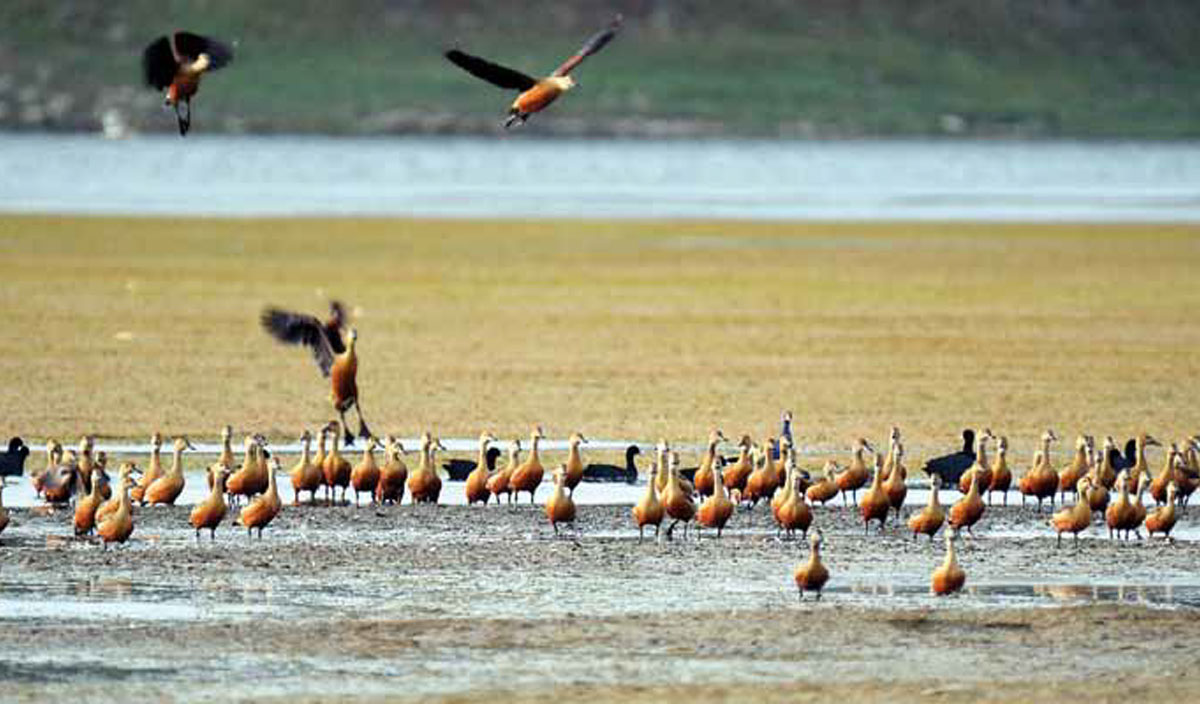
Sirpur Lake, Indore-A new Ramsar Site
By Ajay Gadikar, Dev Kumar Vasudevan
Lakes and wetlands are the most precious ecosystems as they are the starting point of the terrestrial water cycle. A cycle that sustains life on earth. The freshwater after precipitation gets trapped in these wetlands and is subsequently released thus satisfying a variety of human needs right from drinking to domestic water needs, agriculture, aquaculture and industrial activities.
Sirpur Lake situated right in the midst of Indore city is a more than 130 years old, 670 acres manmade lake which was constructed by Maharaja Shivajirao Holkar for the purpose of water supply to Indore city. The lake is situated on Dhar Road, just 2 KM from the very busy Gangwal Bus Stand. The Indore city gazette of 1908 has many references to this lake being used for water supply and recreational purposes. This lake provided drinking water to Indore city for more than a century. It is only recently when the Narmada water supply commenced for Indore city that this lake got neglected by the Indore Municipal Corporation. It was surrounded by farms and trees and was away from the hustle and bustle of Indore city. It gets its water from the 3 channels, of which the Sukhniwas Lake (now in the premises and custody of the Department of Atomic Energy’s Raja Ramanna Center for Advanced Technology, RRCAT) is the prominent one.
It was said that the lake was also built to cool the wind blowing towards the Phooti Kothi which served as Holkar’s summer palace for some years.
Habitat:
The lake has a wonderful mix of aquatic habitat, grassland surroundings and fig trees, which provides a very prospective eco zone and is a home to healthy avian populations all throughout the year. The reservoir is mostly shallow, good for waders and other waterfowl. As the water level recedes, many islands serve as roosting sites for waterfowl. Due to its vast shallow reedbeds, the wetland is a haven to a large number of birds throughout the year. One can observe symbiotic relationships of many species and the healthy presence of food base for all the avian species here.
Avifauna:
The tribal communities heavily rely on the core and buffer areas of Kanha Tiger Reserve for their livelihoods, collecting Minor Forest Produce (MFP) such as bamboo, fuelwood, medicinal plants, fruits, mushrooms, etc. However, this over-reliance leads to conflicts with the Forest Department and wildlife and raises concerns about the exploitation of protected forest areas.
Migratory species of ducks such as Pochards, Gadwalls, Garganeys, Brahminy Shelducks and many other species winter here every year. Sirpur Lake till 2007 had a breeding pair of Sarus Cranes they have now migrated to the nearby Yashwant Sagar lake. In the year 2020-21 a year long bird survey was carried out here with the help of a number of volunteers which has resulted in acquisition of in depth and exhaustive data about the birds of this IBBA (Important Bird and Biodiversity Area). The survey has found that Sirpur Lake is blessed with 189 species of birds.
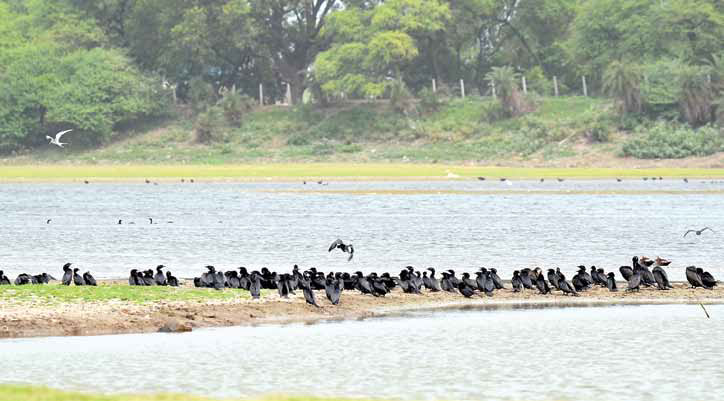
Cormorants basking under the sunlight on a cool winter morning
This survey has enabled the tabulation of detailed bird diversity that is present here. As on the basis of such report, authorities can know which species require immediate attention for their conservation. This survey established a good bird diversity (number of species) for Sirpur, but unfortunately the bird population, especially that of migratory birds has reduced a lot.
The numbers of migratory birds last winter were quite less compared to earlier years. With the documented decline and increasing threats to bird populations, protecting this habitat is of paramount importance at this time. Also, in order to conserve nature effectively, it is necessary to protect such places which are most important for biodiversity and therefore conservation action.
Conservation Issues and TNV Initiatives
With the growth and the expansion of the city limits, the lake also went into the cruel cycle of haphazard development and construction in its vicinity and surroundings. Today more than 20 colonies surrounding the Sirpur Lake and more than 100,000 people live near it. Some of these colonies are illegal with almost no water and sewerage systems.
These colonies have not only blocked some of the channels which used to feed the lakes but are also responsible for polluting the water due to directly releasing drainage water into the lake waters.
Unfortunately, after the Holkar rule was over, the political leaders and government officials turned a blind eye to the lake for a long time and over a period of time due to encroachment, illegal poaching, cloth washing and using the water for nearby fields made life difficult for the resident and migratory avian species of the lake.
In 1992 environmental activists Bhalu Mondhe, Abhilash Khandekar along with a few environmentally restless citizens of Indore formed an NGO named TNV (The Nature Volunteers). They were terribly agitated by the worsening condition of the lake and started working towards its conservation – an effort which continues till date. They are trying hard to bring the lake back to its previous glory.
TNV has put pressure on Indore Administration and IMC to launch a drive to remove encroachments erected in the revenue land that is adjacent to the lake. Since the last 30 years a fair amount of conservation effort has been put in by TNV with the help of the Indore Municipal Corporation, successive members of parliament of Indore, MLAs, Mayors of Indore city and members of the local council. The communities living around the lake also share the responsibility and work together with the government and TNV to conserve and restore the lake.
The Nature Volunteers frequently conduct various programs to increase awareness about the lake and to showcase its importance. Programs such as water conservation seminar, biodiversity conservation workshop, bird watching camps, water testing drives, bird counts and surveys are some of the initiatives undertaken. The efforts of the last 30 years by TNV have created a great awareness about Sirpur Lake among the locals and also throughout the state.
TNV along with social and education institutions conducts sapling plantation drives that help to increase greenery to attract the birds. Around 500 saplings are planted every year. The species include Mango, Tamarind, Neem, Banyan, Malburry etc. The greenery of the area has increased manifold in the last few years.
A butterfly park is also being developed near the still incomplete interpretation centre. This is primarily being done by members of TNV along with students of various educational institutions and companies like TCS. During summers the volunteers have also watered the saplings with water brought from home.
Carefully selected host species are also being planted to attract more butterfly species. The park should take a good shape in a few months. The Chhota Sirpur Talab is plagued with water hyacinth (Jal kumbhi). This dreaded aquatic weed has totally choked the small lake. This lake is now virtually a dead zone.
The aquatic oxygen has been consumed by this weed thus rendering the lake unsuitable for aquatic life. Birds are also shunning this dead zone. Many pairs of Brahminy Shelducks (Surkhab) which used to visit during the winters have not arrived here since the past few years though they are seen in other water bodies of the district.
Shri Bhalu Mondhe along with other TNV members and environment lovers had waded into the water of the Chhota Talaab on Dec 25, 2022 and manually removed a good amount of hyacinth. This was a protest staged against the inaction of the IMC in this matter. The present District Collector Shri Illayaraja T, IAS, is taking a lot of personal interest in this matter and hopefully the menace should be eliminated soon. Among the measures being undertaken are the construction of a sewage treatment plant. Untreated sewage from nearby colonies is being dumped in this talaab and that is providing nutrients to the hyacinth. The STP once fully functional will help in eliminating the hyacinth menace.
A state-of-the-art interpretation centre with well-equipped audio-visual facilities, library and research facilities is under construction at the southern end near the gate number 2. Sadly, the work is proceeding at a very slow pace and nature lovers are impatiently awaiting its completion.
Presently, there is no facility of drinking water/food for visitors. The civic body is contemplating to open a canteen somewhere on the periphery of the lake. TNV is insisting that any such facility should not be at the cost of the environment. It is very important that Sirpur should not become a conventional picnic site full of noisy visitors.
Importance of Ramsar site
In the year 2015 the lake has got an accreditation of IBBA (Important Bird and Biodiversity Area) Later thanks to the efforts of TNV, EPCO and Indore Municipal Corporation, Sirpur has been accorded the coveted status of a Ramsar Site in August 2022. Yashwant Sagar Lake is the second wetland of Indore district to have been awarded the status of Ramsar site in 2022. This was part of a drive during the Azadi Ka Amrit Mahotsav celebrations for the 75th anniversary of Indian independence to take the number of Ramsar sites in the country to 75. Madhya Pradesh now has four Ramsar sites.
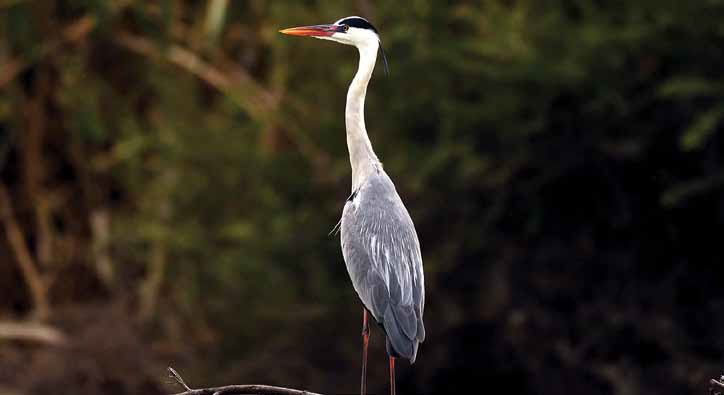
A Grey heron posing for a photo

A foreign delegation on a visit to the Sirpur lake

Dr. Gopi Sunder and Mr. Bhalu Mondhe along with TNV members.
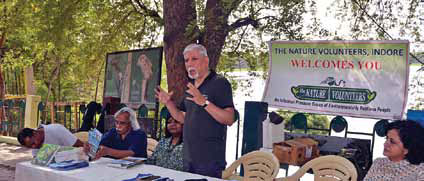
Abhilash Khandekar explaining the importance of wetlands to the audience

TNV members in an awareness drive for students
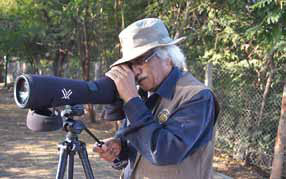
Shri Bhalu Mondhe observing birds
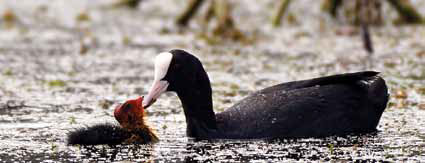
A panoramic view of the Sirpur lake
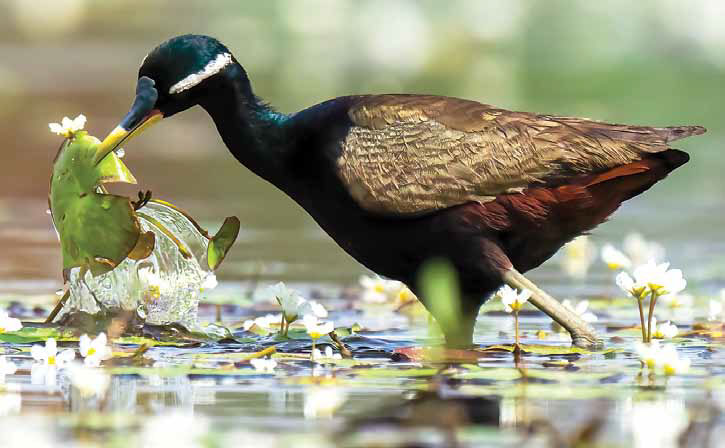
A Bronze winged jacana collecting the nesting material
According to the Wikipedia
A Ramsar site is a wetland site designated to be of international importance under the Ramsar Convention, also known as “The Convention on Wetlands”, an international environmental treaty signed on 2 February 1971 in Ramsar, Iran, under the auspices of UNESCO. It came into force on 21 December 1975, when it was ratified by a sufficient number of nations. It provides for national action and international cooperation regarding the conservation of wetlands, and wise sustainable use of their resources. Ramsar identifies wetlands of international importance, especially those providing waterfowl habitat.
Conclusion
In spite of the challenges and difficulties Sirpur is able to attract good numbers of migrant birds of many species every year. There is an urgent need to create public awareness for saving such water bodies, for removal of encroachments and for keeping a vigil to shoo away the antisocial elements from the place so that this lake remains a good habitat for the avifauna in the coming years as well.
As the number of bird watchers is increasing in Indore and nearby cities it is reassuring that the vigilant eyes of bird watchers will help in controlling the illegal activities around the lake.
Organisations like TNV are doing their bit by conducting conservation related events and by encouraging people to take up the hobby of bird-watching.
The civic body (IMC) has banned fishing, farming and has also removed many makeshift constructions on the periphery of the lake. The IMC also keeps a strict vigil in the area to check garbage menace.
The Way forward
Like any water body, Sirpur lake is capable of providing benefits such as place for bird watching, broad water recharging, flood control, Eco-restoration, humidity control, biota etc. TNV advocates a scientific management and maintenance of water bodies located in urban areas. Unfortunately, urban water bodies have become the receptacle of waste from catchment area thus disturbing the ecosystem. This must change and it will change once all the stake holders agree on the importance of such sites.



